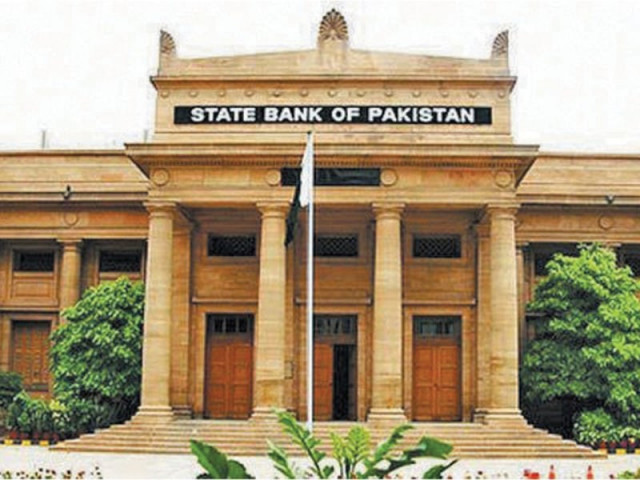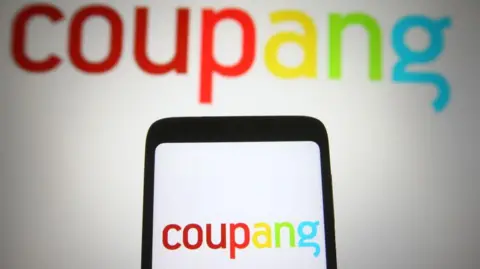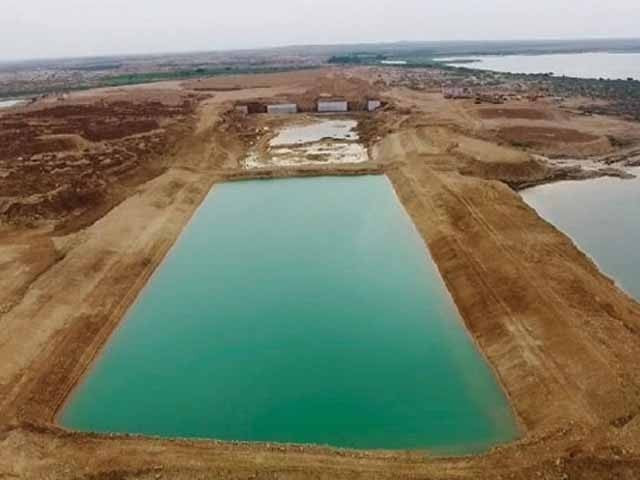Business
SBP transfers Rs2.7tr dividend to govt | The Express Tribune

KARACHI:
The State Bank of Pakistan (SBP) transferred a record Rs2.7 trillion to the federal government as a dividend payout for fiscal year 2024-25 (FY25), despite recording a 27% decline in its own annual profit.
According to an analysis of central bank data, the SBP’s profit for FY25 stood at Rs2.5 trillion. This decrease is primarily attributed to a recent decline in the benchmark interest rate, which has compressed the bank’s earnings from its monetary operations.
The dividend payout to the federal coffers surged dramatically. The transfer of Rs2.7 trillion marks a massive increase of 2.8 times, or 180%, compared to the previous fiscal year.
Moreover, the SBP’s foreign exchange reserves recorded a slight increase of $18 million during the week ended August 22, 2025, pushing the bank’s reserves to $14.274 billion. According to the data released by the SBP, the country’s total liquid foreign reserves stood at $19.618 billion. Of these, the reserves held by commercial banks amounted to $5.343 billion. “Import cover is estimated to be at 2.7 months after the aforementioned change,” noted AKD Securities.
Earlier, the SBP carried out net foreign exchange interventions amounting to $7.8 billion between June 2024 and May 2025.
Moreover, the Pakistani rupee inched up slightly on Thursday, appreciating by 0.01% against the US dollar in the inter-bank market. By the day’s close, the rupee stood at 281.80, marking an improvement of three paisa compared to the previous session. This also extended the local currency’s winning streak to 15 consecutive sessions. On Wednesday, the rupee had closed at 281.83 against the greenback.
Furthermore, the SBP-held gold reserves surged to $6.8 billion in FY25, reflecting a robust 41% year-on-year (YoY) spike, according to the SBP and AKD Research data.
The significant rise was mainly attributed to a sharp rally in global gold prices, while the central bank also added 1,925 ounces to its holdings during the year.
Over the last five years, the SBP’s gold reserves have shown consistent growth, rising from $3.67 billion in FY20 to $6.84 billion in FY25, more than doubling in value. The trend highlights Pakistan’s increasing reliance on gold as a safe-haven asset to strengthen its overall reserves position. Meanwhile, gold prices in Pakistan continued their upward trend on Thursday, tracking international gains, as the global bullion market hit a five-week high. The rise was fueled by a softer US dollar and safe-haven demand amid concerns over the Federal Reserve’s independence.
According to the All Pakistan Sarafa Gems and Jewellers Association, the price of gold per tola increased by Rs900, reaching Rs362,600, while 10-gram gold was sold for Rs310,871 after rising Rs772.
In the international market, gold traded between $3,384 and $3,413 an ounce, with prices later hovering around $3,406. Interactive Commodities Director Adnan Agar noted that gold has gradually risen by around $100 in the past 10 days, climbing from the $3,300 level. “Gold has been moving in one direction for about three months within a $100-150 range,” Agar said. “Sustainability of this rise depends on future developments. If US interest rates are lowered, it will be favourable for gold. For now, the market is awaiting clear signals.”
Business
South Korea: Online retail giant Coupang hit by massive data leak

Osmond ChiaBusiness reporter
 Getty Images
Getty ImagesSouth Korea’s largest online retailer, Coupang, has apologised for a massive data breach potentially involving nearly 34 million local customer accounts.
The country’s internet authority said that it is investigating the breach and that details from the millions of accounts have likely been exposed.
Coupang is often described as South Korea’s equivalent of Amazon.com. The breach marks the latest in a series of data leaks at major firms in the country, including its telecommunications giant, SK Telecom.
Coupang told the BBC it became aware of the unauthorised access of personal data of about 4,500 customer accounts on 18 November and immediately reported it to the authorities.
But later checks found that some 33.7 million customer accounts – all in South Korea – were likely exposed, said Coupang, adding that the breach is believed to have begun as early as June through a server based overseas.
The exposed data is limited to name, email address, phone number, shipping address and some order histories, Coupang said.
No credit card information or login credentials were leaked. Those details remain securely protected and no action is required from Coupang users at this point, the firm added.
The number of accounts affected by the incident represents more than half of South Korea’s roughly-52 million population.
Coupang, which is founded in South Korea and headquartered in the US, said recently that it had nearly 25 million active users.
Coupang apologised to its customers and warned them to stay alert to scams impersonating the company.
The firm did not give details on who is behind the breach.
South Korean media outlets reported on Sunday that a former Coupang employee from China was suspected of being behind the breach.
The authorities are assessing the scale of the breach as well as whether Coupang had broken any data protection safety rules, South Korea’s Ministry of Science and ICT said in a statement.
“As the breach involves the contact details and addresses of a large number of citizens, the Commission plans to conduct a swift investigation and impose strict sanctions if it finds a violation of the duty to implement safety measures under the Protection Act.”
The incident marks the latest in a series of breaches affecting major South Korean companies this year, despite the country’s reputation for stringent data privacy rules.
SK Telecom, South Korea’s largest mobile operator, was fined nearly $100m (£76m) over a data breach involving more than 20 million subscribers.
In September, Lotte Cards also said the data of nearly three million customers was leaked after a cyber-attack on the credit card firm.
Business
Agency workers covering for Birmingham bin strikers to join picket lines

Agency workers hired to cover Birmingham bin strikers will join them on picket lines on Monday, a union has said.
A rally will be held by Unite The Union at Smithfield Depot on Pershore Street, Birmingham, on Monday morning to mark the first day of strike action by agency refuse workers.
Unite said the Job & Talent agency workers had voted in favour of strike action “over bullying, harassment and the threat of blacklisting at the council’s refuse department two weeks ago”.
The union said the number of agency workers who will join the strike action is “growing daily”.
Strikes by directly-employed bin workers, which have been running since January, could continue beyond May’s local elections.
The directly-employed bin workers voted in favour of extending their industrial action mandate earlier this month.
Unite general secretary Sharon Graham said: “Birmingham council will only resolve this dispute when it stops the appalling treatment of its workforce.
“Agency workers have now joined with directly-employed staff to stand up against the massive injustices done to them.
“Instead of wasting millions more of council taxpayers’ money fighting a dispute it could settle justly for a fraction of the cost, the council needs to return to talks with Unite and put forward a fair deal for all bin workers.
“Strikes will not end until it does.”
Business
Pakistan’s crisis differs from world | The Express Tribune
1729471601-0/image-(8)1729471601-0-640x480.webp)
Multiple elite clusters capture system as each extracts benefits in different ways
Pakistan’s ruling elite reinforces a blind nationalism, promoting the belief that the country does not need to learn from developed or emerging economies, as this serves their interests. PHOTO: FILE
KARACHI:
Elite capture is hardly a unique Pakistani phenomenon. Across developing economies – from Latin America to Sub-Saharan Africa and parts of South Asia – political and economic systems are often influenced, shaped, or quietly commandeered by narrow interest groups.
However, the latest IMF analysis of Pakistan’s political economy highlights a deeper, more entrenched strain of elite capture; one that is broader in composition, more durable in structure, and more corrosive in its fiscal consequences than what is commonly observed elsewhere. This difference matters because it shapes why repeated reform cycles have failed, why tax bases remain narrow, and why the state repeatedly slips back into crisis despite bailouts, stabilisation efforts, and policy resets.
Globally, elite capture typically operates through predictable channels: regulatory manipulation, favourable credit allocation, public-sector appointments, or preferential access to state contracts. In most emerging economies, these practices tend to be dominated by one or two elite blocs; often oligarchic business families or entrenched political networks.
In contrast, Pakistan’s system is not captured by a single group but by multiple competing elite clusters – military, political dynasties, large landholders, protected industrial lobbies, and urban commercial networks; each extracting benefits in different forms. Instead of acting as a unified oligarchic class, these groups engage in a form of competitive extraction, amplifying inefficiencies and leaving the state structurally weak.
The IMF’s identification of this fragmentation is crucial. Unlike countries where the dominant elite at least maintains a degree of policy coherence, such as Vietnam’s party-led model or Turkiye’s centralised political-business nexus, Pakistan’s fragmentation results in incoherent, stop-start economic governance, with every reform initiative caught in the crossfire of competing privileges.
For example, tax exemptions continue to favour both agricultural landholders and protected sectors despite broad consensus on the inefficiencies they generate. Meanwhile, state-owned enterprises continue to drain the budget due to overlapping political and bureaucratic interests that resist restructuring. These dynamics create a fiscal environment where adjustment becomes politically costly and therefore systematically delayed.
Another distinguishing characteristic is the fiscal footprint of elite capture in Pakistan. While elite influence is global, its measurable impact on Pakistan’s budget is unusually pronounced. Regressive tax structures, preferential energy tariffs, subsidised credit lines for favoured industries, and the persistent shielding of large informal commercial segments combine to erode the state’s revenue base.
The result is dependency on external financing and an inability to build buffers. Where other developing economies have expanded domestic taxation after crises, like Indonesia after the Asian financial crisis, Pakistan’s tax-to-GDP ratio has stagnated or deteriorated, repeatedly offset by politically negotiated exemptions.
Moreover, unlike countries where elite capture operates primarily through economic levers, Pakistan’s structure is intensely politico-establishment in design. This tri-layer configuration creates an institutional rigidity that is difficult to unwind. The civil-military imbalance limits parliamentary oversight of fiscal decisions, political fragmentation obstructs legislative reform, and bureaucratic inertia prevents implementation, even when policies are designed effectively.
In many ways, Pakistan’s challenge is not just elite capture; it is elite entanglement, where power is diffused, yet collectively resistant to change. Given these distinctions, the solutions cannot simply mimic generic reform templates applied in other developing economies. Pakistan requires a sequenced, politically aware reform agenda that aligns incentives rather than assuming an unrealistic national consensus.
First, broadening the tax base must be anchored in institutional credibility rather than coercion. The state has historically attempted forced compliance but has not invested in digitalisation, transparent tax administration, and trusted grievance mechanisms. Countries like Rwanda and Georgia demonstrate that tax reforms succeed only when the system is depersonalised and automated. Pakistan’s current reforms must similarly prioritise structural modernisation over episodic revenue drives.
Second, rationalising subsidies and preferential tariffs requires a political bargain that recognises the diversity of elite interests. Phasing out energy subsidies for specific sectors should be accompanied by productivity-linked support, time-bound transition windows, and export-competitiveness incentives. This shifts the debate from entitlement to performance, making reform politically feasible.
Third, Pakistan must reduce its SOE burden through a dual-track programme: commercial restructuring where feasible and privatisation or liquidation where not. Many countries, including Brazil and Malaysia, have stabilised finances by ring-fencing SOE losses. Pakistan needs a professional, autonomous holding company structure like Singapore’s Temasek to depoliticise SOE governance.
Fourth, politico-establishment reform is essential but must be approached through institutional incentives rather than confrontation. The creation of unified economic decision-making forums with transparent minutes, parliamentary reporting, and performance audits can gradually rebalance power. The goal is not confrontation, but alignment of national economic priorities with institutional roles.
Finally, political stability is the foundational prerequisite. Long-term reform cannot coexist with cyclical political resets. Countries that broke elite capture, such as South Korea in the 1960s or Indonesia in the 2000s, did so through sustained, multi-year policy continuity.
What differentiates Pakistan is not the existence of elite capture but its multi-polar, deeply institutionalised, fiscally destructive form. Yet this does not make reform impossible. It simply means the solutions must reflect the structural specificity of Pakistan’s governance. Undoing entrenched capture requires neither revolutionary rhetoric nor unrealistic expectations but a deliberate recalibration of incentives, institutions, and political alignments. Only through such a pragmatic approach can Pakistan shift from chronic crisis management to genuine economic renewal.
The writer is a financial market enthusiast and is associated with Pakistan’s stocks, commodities and emerging technology
-

 Sports1 week ago
Sports1 week agoWATCH: Ronaldo scores spectacular bicycle kick
-

 Entertainment7 days ago
Entertainment7 days agoWelcome to Derry’ episode 5 delivers shocking twist
-

 Politics7 days ago
Politics7 days agoWashington and Kyiv Stress Any Peace Deal Must Fully Respect Ukraine’s Sovereignty
-

 Business1 week ago
Business1 week agoKey economic data and trends that will shape Rachel Reeves’ Budget
-

 Tech5 days ago
Tech5 days agoWake Up—the Best Black Friday Mattress Sales Are Here
-

 Fashion7 days ago
Fashion7 days agoCanada’s Lululemon unveils team Canada kit for Milano Cortina 2026
-

 Politics1 week ago
Politics1 week ago53,000 Sikhs vote in Ottawa Khalistan Referendum amid Carney-Modi trade talks scrutiny
-

 Tech5 days ago
Tech5 days agoThe Alienware Aurora Gaming Desktop Punches Above Its Weight










